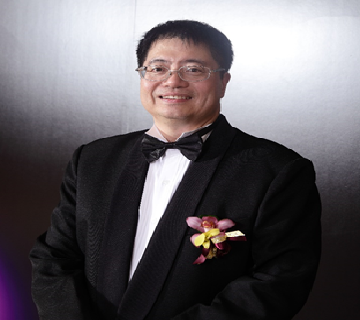Scientific Program

M Tokunaga
Professor, Kyushu University, Japan
Biography:
M Tokunaga graduated from Department of Chemistry, Nagoya University and received his PhD in 1995 on asymmetric hydrogenation under the supervision of Prof. Noyori. He carried out post-doctoral work at Harvard University (1995-97), and RIKEN institute (1997-01) then was appointed an Associate Professor at Hokkaido University in 2001 and professor at Kyushu University in 2006. His original research field is homogeneous catalysis and organic synthesis. He has expanded his field into heterogeneous catalysis and nanomaterials and developing novel applications, one of which is adsorptive desulfurization from beverages, especially from Japanese sake.
Abstract
Japanese sake contains many kinds of volatile molecules, including esters, alcohols, acids, and sulfur compounds. The control of flavour is one of the important issues for sake brewing. The major methodologies currently used concerns brewing process techniques and biotechnological approaches. We introduce a method using supported gold nanoparticles for selective removal of aged off-flavor of Japanese sake by collaboration with sake- and catalysis researchers. During the storages of Japanese sake, an aged odor often emerges, which is so-called hineka in Japanese. Dr. Isogai, one of the authors, disclosed that 1,3-dimethyltrisulfane (DMTS) is responsible for the smell. Traditionally, activated carbon has been used to reduce that but the carbon also decreases fruity flavour, so-called ginjoka, which arises from esters such as ethyl hexanoate. We demonstrate here, supported gold nanoparticles effectively adsorb DMTS without the detracting from its fruity aroma both in model solutions and real Japanese sake samples. The silica supported gold nanoparticles (Au/SiO2) were prepared by impregnation using Au–amino acid complexes as precursors. Adsorptive desulfurization using a model solution containing 4.7 mg L-1 of DMTS in ethanol elucidated that smaller size of Au exhibited higher rate and equilibrium of adsorption. Langmuir-type monolayer adsorption is expected based on an adsorption isotherm experiment. Then adsorptive desulfurization was carried out with several kinds of aged odor emerged-Japanese sake samples. A sample (daiginjo) contains 0.67 µg L-1 of DMTS for control, but was decreased to 0.29 µg L-1 with activated carbon and 0.10 µg L-1 with Au/SiO2. On the other hand, ethyl hexanoate reduced to half with activated carbon but remained intact with Au/SiO2. Sensory evaluation well reflected the results of the instrumental analyses.
- Food Microbiology
- Food Contamination and Spoilage
- Risk Assessment and Risk Management
- Foodborne Pathogens and Food Poisoning
- Brewing technology and Oenology
- Food Safety and Preservation
- Probiotics and Prebiotics
- Microbiology of Fermented Foods and Beverages
- Single Cell Protein

